The Breast Augmentation Procedure
For breast augmentation using artificial implants, Dr. Sweat will make an incision and lift the tissue to create a pocket for the implant. The pocket will either be made directly underneath the breast glandular tissue or the pectoral (chest) muscle, depending on your anatomy, the type of implant you desire, and your desired result.
The type, size, and surgical location of your breast implant are all considerations that will be addressed prior to your surgery.
Implant Type
In the US, there are two basic types of implants in terms of the material with which the implant is filled. The implant can be filled with either saline (sterile salt water) or silicone gel.
Implants come in varying shapes and sizes and can either have a smooth or textured shell. If the implant is anatomically shaped (teardrop), texturing is required to prevent rotation and malposition of the implant.
In addition to anatomically shaped implants, round implants can have different profiles or projections. The projection can vary from a low-profile implant, which is flatter but wider to an ultra-high-profile implant which is much taller with a narrow base. The anatomy of each individual patient coupled with the choice of size enhancement usually dictates which implant profile is right for them.
Placement of the implant beneath the muscle has been shown to decrease the risk of capsular contracture. However, not every patient wants or needs this placement for the best results for their anatomy.
Textured implants have more commonly been associated with a very rare type of cancer recently discovered to be associated with breast implants called Breast Implant Associated Anaplastic Large Cell Lymphoma (BIA-ALCL).
Incision Choices
If the patient is undergoing a breast lift procedure (mastopexy) in addition to augmentation, the lift will determine the incision location. Before the FDA approval and subsequent re-introduction of silicone gel implants to the general public in 2007, incisions around the nipple were very popular since saline implants are not pre-filled and can be placed through very small incisions.
However, since the re-introduction of silicone implants, the inframammary fold incision (placed in the fold under the breast) has surged in popularity and is thought to be associated with a lower incidence of capsular contracture. Incisions in the armpit have also decreased in popularity with gel implants and an incision in the belly button can only be done with saline-filled implants and should not be done since it voids the manufacturer’s warranty.
Due to potential positional problems, Dr. Sweat recommends avoiding implant placement through a tummy tuck incision when performing a mommy makeover.
Implant Position
Breast implants are usually placed either over the pectoral muscle in a sub-mammary (under the breast) position or under the pectoral muscle in what is commonly referred to as a dual-plane approach in which the pectoral muscle partially covers the implant, but not entirely. Total muscle coverage is possible but is rarely performed since it is more painful and unnecessary.
Saline implants are almost always placed under the muscle to help cover and camouflage the implant and avoid rippling of the implant which is occasionally visible in the upper part of the breast. Gel-filled implants are placed under the muscle when needed to help decrease the risk of capsular contracture. It’s also used if a smooth texture implant is chosen to help hold it in the proper position when the skin and soft tissue has been stretched by breastfeeding or weight loss.
The downsides of placing the implant under the muscle are weakening of the pectoral muscle itself, increased postoperative pain compared to a sub-mammary position, and animation deformity. Animation deformity refers to the abnormal shape of the breast tissue that occurs when the pectoral muscle is tightened, but resolves immediately upon relaxation of the muscle so that the implant falls back into normal position. Animation deformity and loss of pectoral strength can be important considerations in women who are physically active for their jobs or lifestyles.
The downsides of placing the implant over the muscle are less support for the implant, greater risk of implant visibility or palpability (being able to feel the implant), and increased risk of scar tissue forming around the implant, especially with smooth or gel-filled implants.
Implant Specific Considerations
Implant Rupture: Implants are not meant to last a lifetime. On average, implants are thought to last 10-15 years before the shell of the implant becomes weak enough to rupture, though this can happen at any time after placement, even within the first few months.
While the implants do not “explode” or break after a certain period of time like a ticking time bomb, they are also not designed to be lifetime devices. As such, any woman considering breast augmentation should take into consideration that this may not be the last operation they have on their breasts.
While saline implants leak salt water that can be reabsorbed by the body and will be easily noticeable by the decreased size of the implant (and breast volume), gel-filled implants are designed so that the gel continues to be cohesive after rupture. As such, a silicone breast implant rupture can be nearly completely unnoticed (this is called a “silent” rupture).
When the FDA reintroduced silicone breast implants to the market in late 2007, they recommended that women have an MRI to screen for such a “silent” rupture at 3 years after placement and every 2 years thereafter. Many women and plastic surgeons do not follow this recommendation and the implants are guaranteed for a lifetime (if they ever break during the lifetime of the patient, the manufacturer will replace the devices for free). However, if they rupture within the first 10 years after placement, the manufacturer will replace the device at no cost and provide financial assistance for implant exchange.
For this reason, many patients mistakenly think that implants need to be replaced every 10 years, but instead, Dr. Sweat recommends simply checking the implants for rupture before the 10-year mark. With gel-filled implants, a breakage may not show external signs and patients may never even know that the implant is broken. During your consultation, Dr. Sweat will discuss with you the concerns associated with having a ruptured gel implant.
Capsular Contracture: When scar tissue forms around the surface of the implant, it’s known as a capsule, and every implant develops it. When it is thin and soft, the scar tissue is virtually unrecognizable. However, the scar tissue can become very thick and contract against the implant, which can then cause the implant to seem very hard and unnatural.
Plastic surgeons have not yet come to fully understand the causes of this phenomenon. It can happen at any time after you undergo breast augmentation. Luckily, the risk of developing a capsule that is very hard or even painful is less than 10%, but when it happens to this extent, unfortunately, surgical intervention becomes necessary.
The most common theory about this is that contamination on the surface of the implant creates an adverse internal environment for the implant and thus replacing the old implant with a new one, in addition to completely removing the scar tissue, is usually recommended. However, even if a new implant is used, there can be upwards of a 50% chance of the scar tissue returning after the second operation. Dr. Sweat can discuss with you various treatment options for scar tissue that returns repeatedly.
Infection: Because the implant is medically considered a foreign body, if it becomes contaminated with bacteria at any point, the body cannot fight the infection through traditional means. While every effort is made to avoid any source of contamination, unfortunately, implants do, on rare occasions, become infected.
Treatment for this usually involves removing the implant and leaving it out until the infection has completely resolved and then replacing the implant. Each of these steps means additional surgery as well as additional potential costs. The risk of infection is very low, but it does occasionally happen. As with any surgery, there are no guarantees against the associated risks.
Malposition: Even though the placement of the implants is very precise during the surgical procedure, every person’s tissue will heal differently. Sometimes, especially when large implants are placed, the tissue does not properly support the implants and various issues may result. This can include implants that fall too far to the side when the patient lies flat, double bubble deformity, in which the implant falls below the fold under the breast, or when the implants stay too high and the breast tissue falls over the implant. Breast revision surgery may be necessary if implant malposition occurs.
Breast Augmentation Results
Following surgery, the first part of breast augmentation recovery involves swelling in your breasts. As the swelling goes away, you will begin to see the final results of your surgery. This process can take several weeks for the actual size and shape to be realized, which is why it’s important to take good care of your breast augmentation scars and pay attention to the instructions of your specific breast augmentation surgeon.
Once the recovery process is complete, you will notice a different size and shape of your breasts. It’s important to remember that your breasts may change after your surgery based on weight fluctuations, pregnancy, or aging.
Choosing a plastic surgeon that is right for you is also important to the results of a breast augmentation surgery! Dr. Sweat advises patients considering breast surgery in Sacramento that there is a definite swing on the pendulum of cosmetic surgery toward an authentic and normal look and shape to the breasts, even with breast implants. The decision to find the authentic and perfect look, feel, and size is something only you can decide with Dr. Sweat during your consultation and pre-operative appointment.
Take your first step towards a more confident you and contact us at J. Sweat Plastic Surgery today to schedule a consultation! For more information, visit our blog page!



























